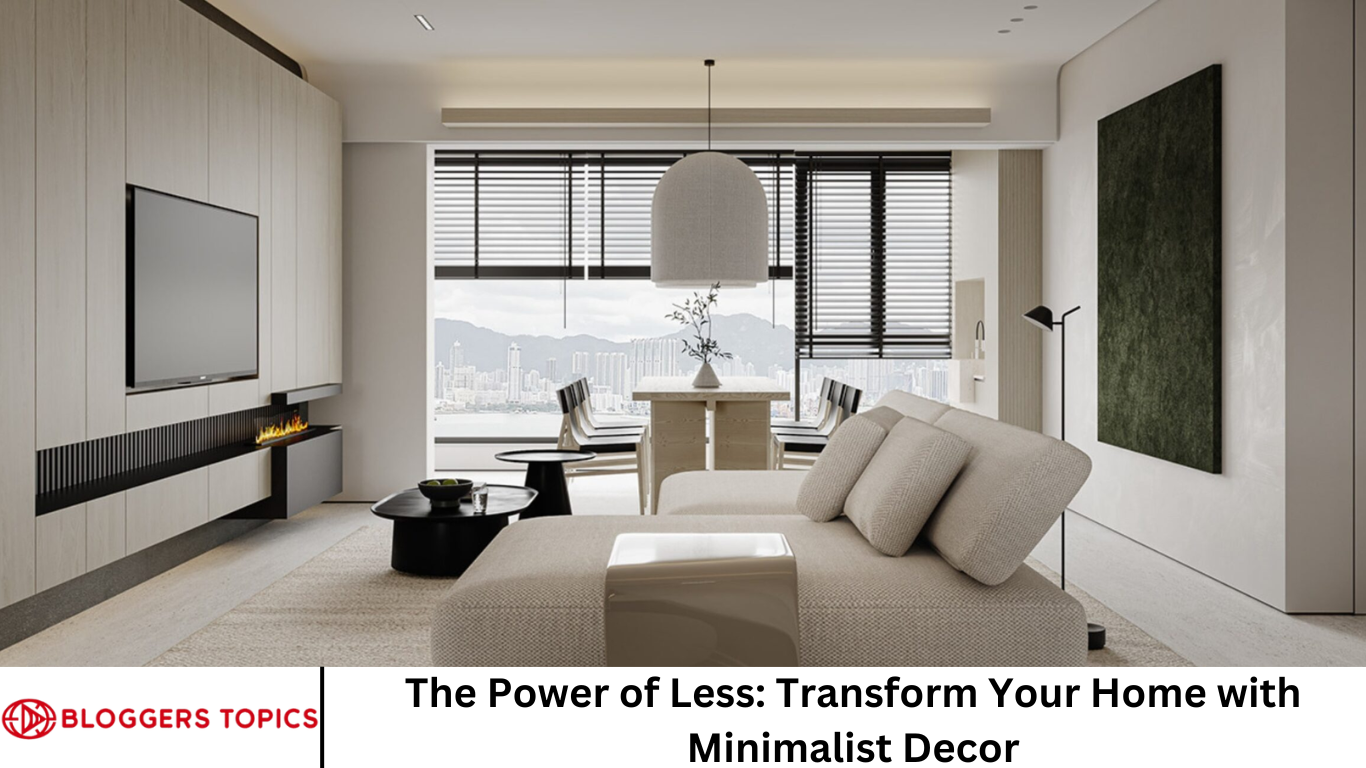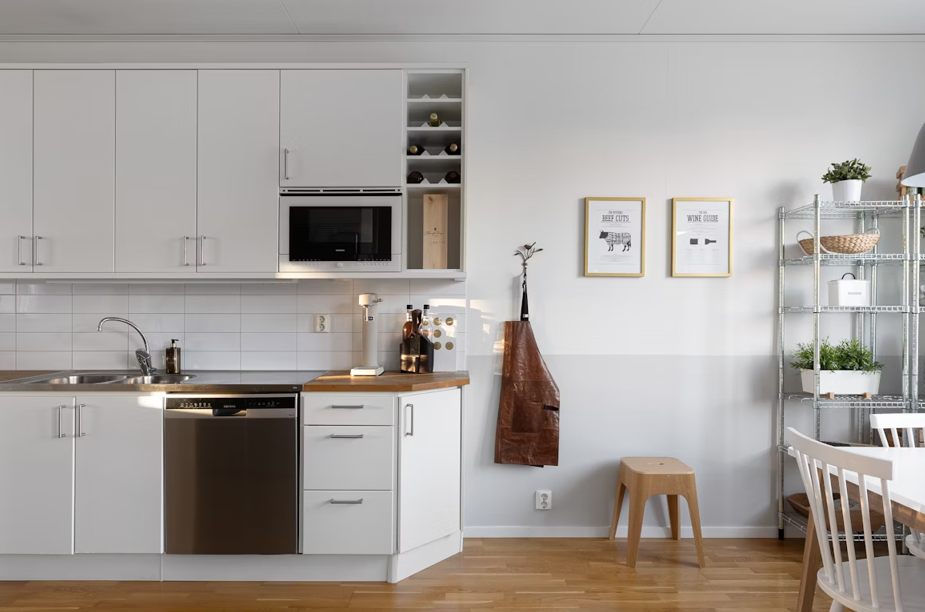Minimalist home decor is more than a design trend—it’s a transformative lifestyle that brings clarity, calm, and purpose to your living space. By embracing the principle of “less is more,” you can create a home that feels open, elegant, and deeply personal.
This guide explores how minimalist decor can elevate your environment, offering practical tips and insights to help you design a space that reflects simplicity and serenity.
More Read: The Morning Routines of High Achievers — Plus a Guide to Crafting Yours
What Is Minimalist Home Decor?
Minimalist home decor focuses on simplicity, functionality, and intentionality. It involves curating your space with essential items that serve a purpose, eliminating excess, and creating an environment that promotes tranquility. Key characteristics include neutral color palettes, clean lines, uncluttered spaces, and a focus on quality over quantity.
The Benefits of Minimalist Living
1. Reduced Stress and Anxiety
A cluttered environment can lead to mental clutter. By simplifying your space, you create a calming atmosphere that reduces stress and promotes relaxation.
2. Enhanced Focus and Productivity
Minimalist spaces eliminate distractions, allowing you to concentrate better and be more productive in your daily activities.
3. Easier Maintenance
With fewer items to clean and organize, maintaining a minimalist home becomes more manageable, saving you time and effort.
4. Financial Savings
Adopting a minimalist approach encourages mindful purchasing, leading to savings by avoiding unnecessary expenditures on non-essential items.
5. Environmental Impact
Minimalism promotes sustainability by reducing consumption and waste, contributing to a healthier planet.
Core Principles of Minimalist Decor
1. Functionality First
Choose furniture and decor that serve a purpose. Multi-functional pieces, like storage ottomans or fold-out desks, maximize utility without adding clutter.
2. Quality Over Quantity
Invest in high-quality items that are durable and timeless, rather than accumulating numerous lesser-quality pieces.
3. Neutral Color Palettes
Utilize shades like white, beige, gray, and soft pastels to create a serene and cohesive look.
4. Clean Lines and Open Spaces
Opt for furniture with simple designs and maintain open floor plans to enhance the sense of space.
5. Thoughtful Decor
Select a few meaningful decor items, such as a piece of art or a cherished photograph, to personalize your space without overwhelming it.
Implementing Minimalist Decor in Different Rooms
Living Room
- Furniture: Choose a comfortable sofa with clean lines and pair it with a simple coffee table.
- Lighting: Use natural light as much as possible; complement with minimalist floor or table lamps.
- Accessories: Limit decor to a few select pieces, such as a plant or a piece of art.
Bedroom
- Bed: Opt for a bed frame with a simple design and use high-quality, neutral-colored bedding.
- Storage: Utilize under-bed storage or built-in closets to keep the room uncluttered.
- Decor: Keep wall decor minimal—perhaps a single piece of artwork or a mirror.
Kitchen
- Countertops: Keep surfaces clear by storing appliances and utensils out of sight.
- Cabinets: Choose flat-panel cabinets in neutral tones for a sleek look.
- Dining Area: Use a simple dining table with minimalistic chairs; avoid excessive table settings.
Bathroom
- Fixtures: Select streamlined fixtures and fittings in chrome or matte finishes.
- Storage: Use wall-mounted shelves or vanity units to store essentials neatly.
- Decor: Incorporate a plant or a piece of art for a touch of personality.
Tips for Maintaining a Minimalist Home
- Regular Decluttering: Periodically assess your belongings and remove items that no longer serve a purpose.
- Mindful Purchasing: Before buying, consider if the item is necessary and aligns with your minimalist goals.
- Organized Storage: Use storage solutions that keep items out of sight but easily accessible.
- Consistency: Maintain a consistent aesthetic throughout your home to enhance the minimalist feel.
- Personalization: While minimalism emphasizes simplicity, ensure your space reflects your personality through carefully chosen decor.
Frequently Asked Question
What is minimalist home decor?
Minimalist home decor focuses on simplicity, clean lines, neutral color palettes, and functional furnishings. It emphasizes quality over quantity and creates calm, clutter-free living spaces.
How can minimalism improve my quality of life?
By reducing visual and physical clutter, minimalism lowers stress, boosts focus, and enhances emotional well-being. It also simplifies cleaning and maintenance, freeing up time and mental energy.
Do I need to get rid of everything to be a minimalist?
No, minimalism isn’t about deprivation. It’s about intentionality—keeping only what adds value or serves a purpose in your life and space.
Is minimalist decor boring or too sterile?
Not at all. Minimalism can be warm and inviting when done thoughtfully, using textures, natural elements, and a few well-chosen personal touches to add character.
How do I start transitioning to minimalist decor?
Begin by decluttering one room at a time, keeping only essential and meaningful items. Opt for neutral tones, streamline furniture, and avoid over-decorating.
Can I practice minimalism with a family or kids?
Yes. Minimalism can work for families by focusing on organization, shared spaces, and reducing excess toys or items that aren’t regularly used.
What are the best colors for a minimalist home?
Neutral shades like white, beige, gray, and soft pastels are common. They help create a serene, cohesive environment and make small spaces feel larger.
Conclusion
Embracing minimalist home decor is a journey toward creating a space that fosters peace, clarity, and intentional living. By focusing on simplicity and purpose, you can transform your home into a sanctuary that supports your well-being and reflects your values. Start small, stay consistent, and enjoy the profound impact of living with less.







